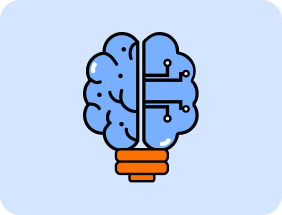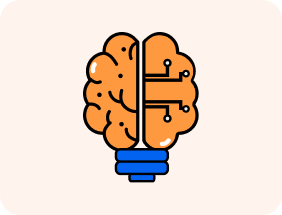How Digital Badges Improve Your LinkedIn Profile and Job Visibility
Digital badges are small, visual symbols that represent your skills, knowledge, or achievements. But they’re more than just icons. They’re smart, verified credentials that help employers quickly understand what you're good at, without needing to read through long resumes.
In this article, we’ll break down what digital badges are, how they work, and how they improve your LinkedIn profile and job visibility. We'll also explore their connection to metacognition strategies, future jobs, and career development.
What Are Digital Badges?
Digital badges are online certificates that show you’ve learned a skill or completed a task. They are small images, but they carry important information like what the skill is, who gave you the badge, when you earned it, and what you had to do to get it.
Unlike paper certificates, digital badges are clickable. When someone clicks on your badge, they can see full details such as the course name, learning hours, or even a project you completed. This makes your skills more visible and trustworthy to employers or anyone reviewing your profile.
Digital badges are often used in online learning, training programs, or professional development. For example, you can earn a badge for learning coding, completing a leadership course, or mastering a software tool like Excel.
These badges are great for your resume, LinkedIn profile, or digital portfolio. They help you stand out, show that you're learning continuously, and make your skills easy to understand.
Whether you’re a student or a working professional, digital badges are a smart way to track your progress and share your achievements with the world.
Why Are Job Credentials Changing?
Degrees Aren’t Always Enough
Traditional degrees still matter, but they often don’t show the full picture of a person’s skills, especially practical or job-specific ones.
Employers Want Proof of Skills
Companies now look for evidence that you can apply what you’ve learned like solving problems, thinking critically, or using specific tools.
Skills Matter More Than Titles
Many roles require hands-on ability and thinking skills, which don’t always come through in academic grades or degree titles.
Micro-Credentials Offer Flexibility
Digital badges and micro-credentials allow learners to prove skills in smaller, focused areas like coding, project management, or communication.
Keeps You Future-Ready
As job markets evolve, learning doesn’t stop after graduation. These credentials help you stay relevant and ready for future jobs.
Better Career Visibility
Credentials like digital badges are easy to share on platforms like LinkedIn, helping employers see your real-world capabilities.
Benefits of Digital Badges for Job Seekers
Digital badges give job seekers a clear, verified way to showcase their skills in real time. They help translate learning into visible achievements that recruiters and hiring managers can easily understand.
1. Quick Skill Recognition
A digital badge tells a recruiter exactly what you’ve learned whether it’s coding, project management, digital marketing, or data analysis. It’s faster and clearer than reading a paragraph in your resume.
2. Trusted Verification
Badges are issued by platforms, universities, or learning companies that verify your completion. It’s harder to fake, and employers appreciate the authenticity.
3. Focused Career Growth
You can collect skill badges for specific topics that align with your career path. For example, if you're aiming to work in design, you can earn badges in tools like Figma, UX design, and creative thinking.
4. Makes You Stand Out on LinkedIn
When you add badges to your LinkedIn profile, they show up visually. This catches attention and shows you’re active, learning, and growing, exactly the kind of mindset employers want to see.
5. Supports Lifelong Learning
The job market is changing fast. Digital badges allow you to keep learning in small steps. You don’t need to go back to college, you can upskill quickly and show it immediately.
How Digital Badges Work on LinkedIn?
Digital badges are more than just icons, they are verified proof of your skills that fit perfectly into your LinkedIn profile and boost your visibility to employers.
A. Easy to Display
You can add badges under the “Licenses & Certifications” section or as part of your featured content. Platforms like Credly, Badgr, and LinkedIn Learning often have one-click integration.
B. Clickable and Shareable
Each badge links to a page that explains your achievement. This page is public, so you can share it in job applications, portfolios, and networking messages.
C. Endorses Your Active Learning
When recruiters see a badge, they know you’re serious about growth. This gives you a strong edge in competitive fields.
Recognition of Online Badges by Recruiters
More and more employers are recognizing digital badges as valid job credentials. Companies like IBM, Google, and Microsoft already issue and value badges for in-demand skills.
Recruiters often search LinkedIn using keywords. Badges help your profile show up more often. When a recruiter sees “Data Visualization with Tableau” or “AI for Beginners” badge, they instantly know what you can do.
Also, badges give an evidence-based edge. They’re not just claims, they are proof of action.
Micro-Credentials: Small but Powerful
Micro-credentials are short, focused learning programs designed to help you master specific skills quickly. Unlike full degrees or long courses, these bite-sized credentials are easier to complete and usually come with a digital badge.
They are especially useful because they focus on job-relevant skills, can be stacked to build a larger learning path, and clearly show your commitment to continuous improvement.
For job seekers, micro-credentials act as mini-resume boosters. They help fill knowledge gaps, enhance your professional profile, and signal to employers that you're proactive about learning and growth. In a changing job market, these small wins can make a big difference.
Connecting Digital Badges with Metacognitive Strategies
Earning and using digital badges isn’t just about skills, it’s about metacognition, or thinking about your own learning. Here’s how:
1. Self-Assessment
You choose what badge to earn based on your career goals. This reflection is a metacognitive strategy, you are planning your own learning.
2. Monitoring Progress
Badges let you track what you’ve done and what’s next. You can look back at your badge list and reflect on your growth.
3. Adjusting Learning Paths
If you feel stuck, badges help you shift direction. You might earn badges in leadership if your current technical skills are already strong. That’s metacognitive flexibility in action.
YMetaconnect, a platform focused on smart learning, integrates this thinking into its system. It helps learners reflect on goals, measure progress, and take action, all through guided tools like Review–Action–Reflection and self-assessment templates.
Digital Badges in Different Careers
Digital badges are flexible and work across industries:
Tech – coding, cybersecurity, machine learning, UI/UX
Marketing – SEO, content strategy, Google Ads
Education – classroom tech, inclusive teaching, curriculum design
Healthcare – digital health tools, medical ethics, mental health awareness
Business – project management, leadership, teamwork
Whether you’re starting out or transitioning to a new field, badges build trust and signal real ability.
Tips to Use Digital Badges Smartly
Here’s how to make the most of your badges:
1. Choose High-Quality Badges
Not all badges are equal. Go for ones from trusted platforms like Coursera, Google, Meta, Microsoft, HubSpot, or your school’s EdTech partner.
2. Align with Career Goals
Pick badges that match your job interests. Don’t earn random ones just for the sake of it.
3. Display Them Clearly
Add them to LinkedIn, your resume, and your personal portfolio. Keep them visible.
4. Explain Their Value
When writing your resume or attending interviews, talk about what the badge taught you and how you applied it.
5. Keep Learning
Digital badges work best when you build a habit of lifelong learning. Add one badge every few months to stay ahead.
The Future of Job Visibility Is Skill-Based
In the world of future jobs, employers will care more about what you can do rather than what certificate you hold. Digital badges fit perfectly into this future. They help you prove your skills, build a strong online identity, and open more job opportunities.
If you're still unsure about where to begin, platforms like YMetaconnect guide you. They help you reflect on what skills you need, track learning goals, and recommend actions that matter. These platforms combine metacognition strategies with real-world tools like digital badges for meaningful, job-ready learning.
Final Thoughts
The job market is shifting. Resumes are no longer the only thing employers look at. Skill badges, micro-credentials, and smart reflections are becoming the new currency of learning.
If you want to improve your LinkedIn profile, increase job visibility, or simply prove you’re more than a paper degree, start collecting digital badges today.
They’re not just images, they’re powerful, verified signals of your growth, mindset, and ability to succeed in the real world.
Read More


 Learner
Learner Mentor
Mentor Organisation
Organisation
 Learner
Learner Mentor
Mentor Organisation
Organisation










